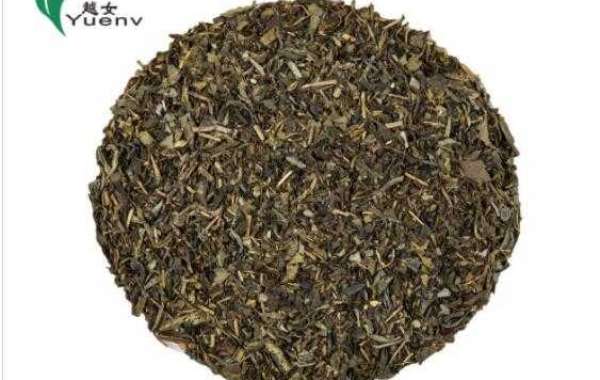Zhenan Green Tea Factory teaches you how to classify black tea?
The earliest black tea that appeared in history was Souchong black tea pioneered in Chong'an County, Fujian Province, China, and is known as the "originator of black tea". There are more and more modern black tea varieties, which can be divided into two types: black tea and broken black tea according to different processing techniques. Red bar tea is suitable for clear drinking, and broken black tea is suitable for blending.
Red bar tea:
Hongtiao tea contains many varieties, which are divided into Souchong black tea and Gongfu black tea according to the different initial preparation methods. Souchong black tea mainly includes Lapsang Souchong, Jin Junmei, etc.; Gongfu black tea mainly includes Zhenghe Gongfu, Bailin Kungfu, Qi Hong, and Dianhong.
Souchong black tea is a special product of Fujian Province in my country. It is a kind of black tea for export, divided into Lapsang Souchong and artificial Souchong (Waishan Souchong). Lapsang Souchong has a long and straight shape, thick and heavy, black and oily in color, with a scent of pine smoke, and the soup is golden in color, and has a mellow taste, similar to longan soup; the artificial seed has a shorter and lighter appearance, with a scent of pine smoke. The soup is slightly lighter in color and full-bodied.- Gongfu black tea is a unique traditional tea variety in my country. The Gongfu black tea in our country is named after the place of origin, such as Qihong and Dianhong. Gongfu black tea has a tight, well-proportioned shape, a smooth color, a bright red soup, a fresh and sweet aroma, a sweet and pure taste, and a bright red bottom of the leaves. The quality of Gongfu black tea varies depending on the place of origin or the species of tea plant.
Broken black tea:
Broken black tea is a large product of black tea sold abroad. It has been fully kneaded and cut during the production process to form a soup with a red color, a sharp and long-lasting aroma, and a strong and fresh taste. It can also be mixed with sugar and milk. drink.
Broken black tea can be divided into five types: traditional broken black tea, C.T.C broken black tea, rotor black broken tea, L.T.P broken black tea, and non-withering broken black tea according to different methods of kneading and cutting.
What are the four major black teas in the world?
Black tea not only has a long history in my country, but also occupies an important position in other countries. The four major black teas in the world today are Chinese Qimen black tea, Indian Assam black tea, Indian Darjeeling black tea and Sri Lankan black tea.
Qimen black tea, Qihong for short, is produced in Qimen County, Huangshan City, Anhui Province, China. The mild climate and abundant rainfall are important factors in the formation of Qihong's sweet and mellow quality.
Assam black tea is produced in the Assam valley in northeastern India. The local rainfall is rich and the sunshine is strong, which is an important factor in the formation of the strong tea fragrance of Assam black tea.
Darjeeling black tea is produced in the Darjeeling Plateau in West Bengal, India. The area is filled with clouds all year round, which is a major factor that breeds the aroma of Darjeeling black tea.
The most famous Sri Lankan black tea is Uwo tea. The local rainfall is abundant and the clouds are filled all the year round. The Uwo tea is bright orange and has the unique qualities of lily of the valley fragrance and mellow taste.
Why is black tea so popular abroad?
- Historical reasons: tea comes from China. In the past, under the condition of underdeveloped transportation, it took quite a long time for tea to be transported from China to Europe and other places, and the quality of green tea would change during this process. The green tea has a fresh fragrance, while the black tea is not affected by the inconvenience of transportation.
- Quality reasons: black tea is not only easier to preserve than green tea, but also less prone to deterioration at room temperature. Black tea has a floral, fruity and sweet aroma, and the taste is mellow, fresh and strong. Europeans take milk meat as their food, so the taste of black tea is more suitable for their needs.
- Suitable for drinking: Europeans like to add a variety of condiments to the tea for flavoring, such as sugar, milk, lemon, mint and vanilla esters. Appropriate drinking is more suitable for European tastes. Green tea is more suitable for clear drinking. Suitable for blending.
What are the famous black teas in China? What are their characteristics?
Black tea is our country’s main export tea variety, with a wide variety and complete variety. Each type of black tea has its own regional characteristics and unique qualities in terms of color, aroma and taste.
- Qimen black tea has a fine appearance, slightly curved, sharp, dark color, slightly grayish light, and the aroma is like honey or apple; the soup is red and bright, and the taste is mellow and sweet; the bottom of the leaf is red and bright.
- Dianhong time, the shape is fat and strong, tight and firm, the color is black and lustrous; it is reddish brown, golden, and has high aroma; the soup is red and bright with golden circles, the taste is strong, and the irritating is strong; the leaf bottom is hypertrophy.
Bailin time, the shape is slender and curved, the color is yellow and black, with more white hoe, pure aroma, with licorice fragrance; the soup is light and bright, and the taste is fresh and slightly light; the bottom of the leaf is bright red and yellow.- Government and time, the shape is tight, curly, gray-black in color, high in aroma and sweet, the soup is bright red, and the taste is mellow; the bottom of the leaf is strong and red.
- Lapsang Souchong, with thick and long strands, heavy bones, black and oily color, with pine smoke fragrance; the soup is dark golden in color, syrupy, and has a mellow taste, similar to the flavor of longan soup; the bottom of the leaf is thick and smooth. Bronze.
- Jinjun eyebrows have tight appearance, heavy weight, golden, yellow, and black color; the soup is golden in color, with golden rings, and the aroma is honey, fresh and refreshing taste; the bottom of the leaf is stretched.
Why is Jin Junmei more expensive than ordinary black tea?
Jin Junmei was developed in 2005 by Mr. Jiang Yuanxun, the 24th generation descendant of Lapsang Souchong and his team. Jin Junmei has improved the traditional production technology of Wuyi Zhengshan Souchong. The price of high-end black tea developed with innovative technology is much higher than that of ordinary black tea. The main reasons are as follows.
- The raw material price of Jin Junmei is high:
Jinjunmei is a kind of Lapsang Souchong. Its raw materials are picked in the Wuyishan National Nature Reserve. The area of tea planting is not large, and the tea planting is scattered, and the cost of picking is high. Therefore, the raw material cost of authentic Jinjunmei is also relatively high. Higher.
Jin Junmei has high labor cost:
The raw materials used by Jin Jun eyebrows are all sprout tips, so workers are required to pick them from tea plants when picking. A pound of Jin Jun eyebrows needs 60,000 to 80,000 sprout tips, so the cost of making Jin Jun eyebrows is higher.
- Market demand leads to high prices:
The high-end black tea developed by Jin Junmei using innovative technology not only retains the excellent characteristics of the traditional Lapsang Souchong black tea, but also innovates the shape and the inner quality of the tea on this basis. Therefore, Jin Junmei satisfies the high-end The needs of market consumers. The birth of Jin Junmei not only filled the domestic black tea market without high-end black tea, but also made the black tea market more colorful.
Does the turbidity of the tea soup mean that the tea has deteriorated?
When we drink black tea, we will find that the tea soup will become turbid after the tea is cold, thinking that the black tea we drink has deteriorated? In fact, the turbidity of black tea tea soup is not a manifestation of the deterioration of the tea, but a unique normal phenomenon, which is called "cloudy after cold." "Cold and muddy" is a unique phenomenon of black tea, and it is also one of the characteristics of high-quality and high-end black tea.
Gunpowder Green Tea Factory’s high-grade black tea contains more theaflavins and thearubicins. These two substances will react with the caffeine in the tea and dissolve in the tea soup during brewing. As the temperature of the tea soup slowly decreases, the tea soup From clear to muddy, light brown or orange milky matter appears. As the temperature of the tea soup increases, the phenomenon of "muddy after cold" disappears. In the process of buying black tea, you can make a cup and wait for it to cool down to see if there is a phenomenon of "cloudy after cold" to judge the quality of black tea.








